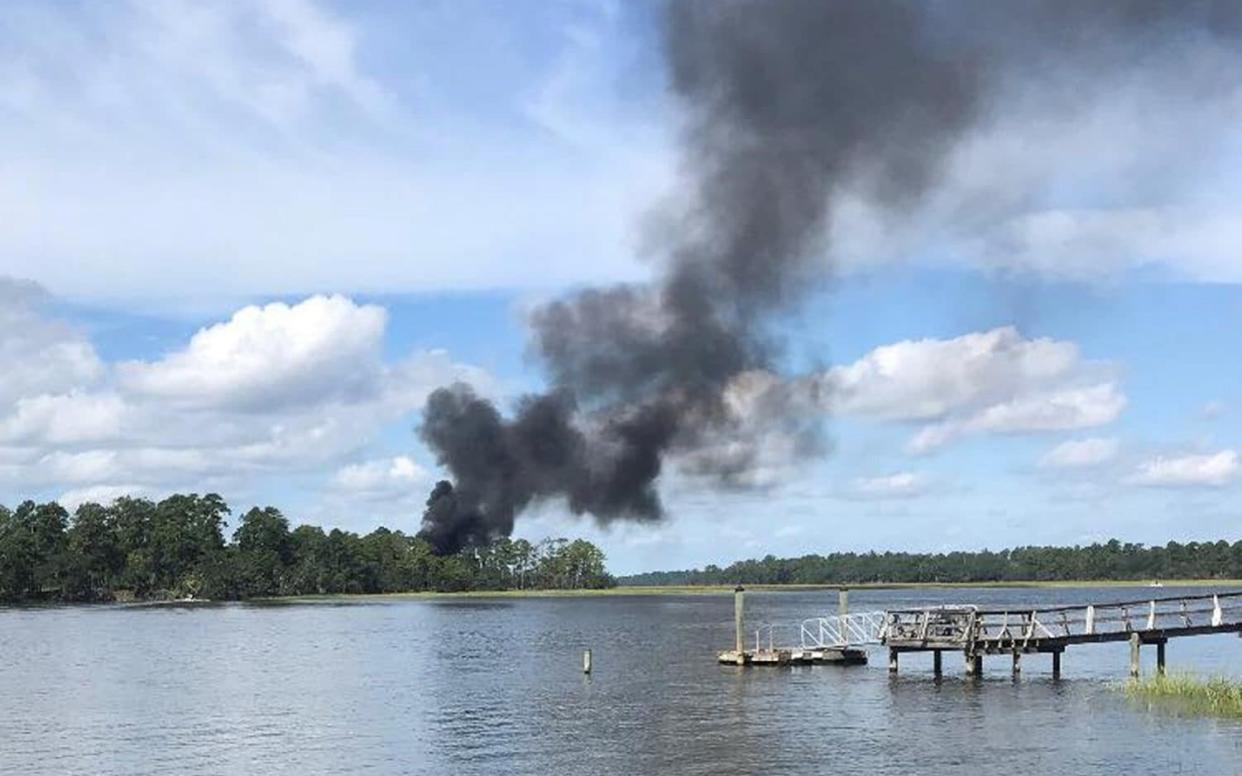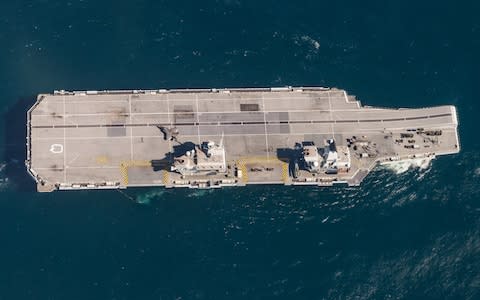First F-35 crash occurs on same day stealth jet lands on British carrier

The US military has announced an F-35B Lightning II stealth jet has crashed, the first such loss to the programme.
The US Marine Corps said the plane came down near Beaufort, South Carolina, on Friday. The American pilot safely ejected and was evaluated by medical personnel. There were no civilian casualties.
An investigation into the crash was launched although the fleet was not grounded, suggesting the cause was not thought to be a fundamental design or safety flaw.
Britain has said it will buy 138 F-35B jets, the same variant as the one that crashed, and has committed money for the first 48.
The crash occurred on the same day as the Ministry of Defence announced the first F-35B jets had landed on HMS Queen Elizabeth, marking Britain’s return to carrier strike operations.
An MoD spokesman told the Telegraph the UK was not looking to ground its fleet of F-35 aircraft, but that the Aviation Safety Authority would keep that decision under review.

The 17-year F-35 programme has been widely criticised for cost and combat effectiveness. Of the three aircraft variants, the ‘B’ model is designed for vertical take-off and landing. The engineering constraints necessary for such manoeuvres reduces the room for weapons and fuel.
However, both the US Marine Corps and the British government decided the flexibility afforded by vertical lift, combined with shorter - and therefore cheaper - aircraft carriers, meant the ‘B’ model was the preferred option.
On Friday Lockheed Martin, the prime contractor for the F-35 programme, announced a deal with the US government for an additional 141 jets had reduced the unit cost of future purchases across all variants. As a result, the next batch of British F-35B aircraft will be reduced in cost by 5.7 per cent to $115.5 million (£88.6 million) per airframe.
Vice Admiral Mat Winter, the F-35 programme executive officer, said: “driving down cost is critical to the success of this program.
“We are delivering on our commitment to get the best price for taxpayers and war fighters.”

